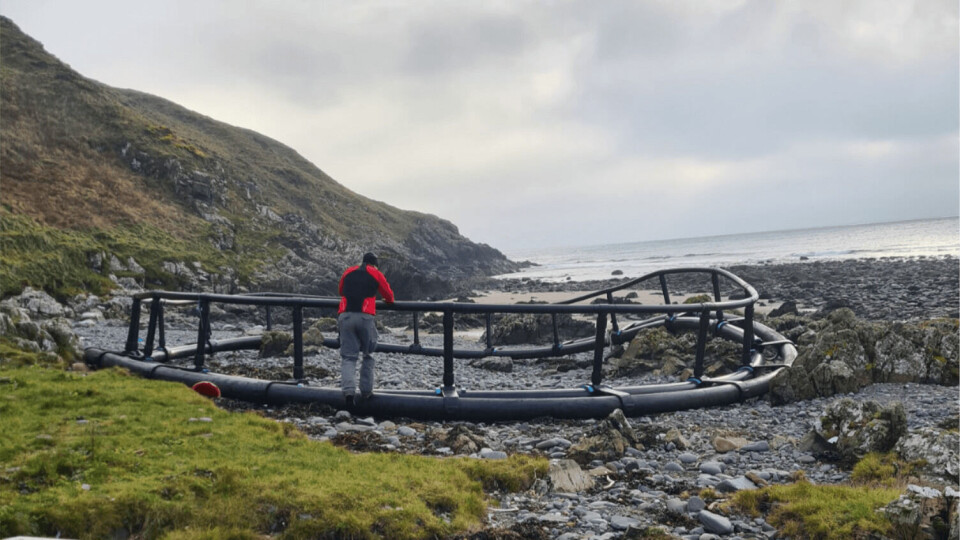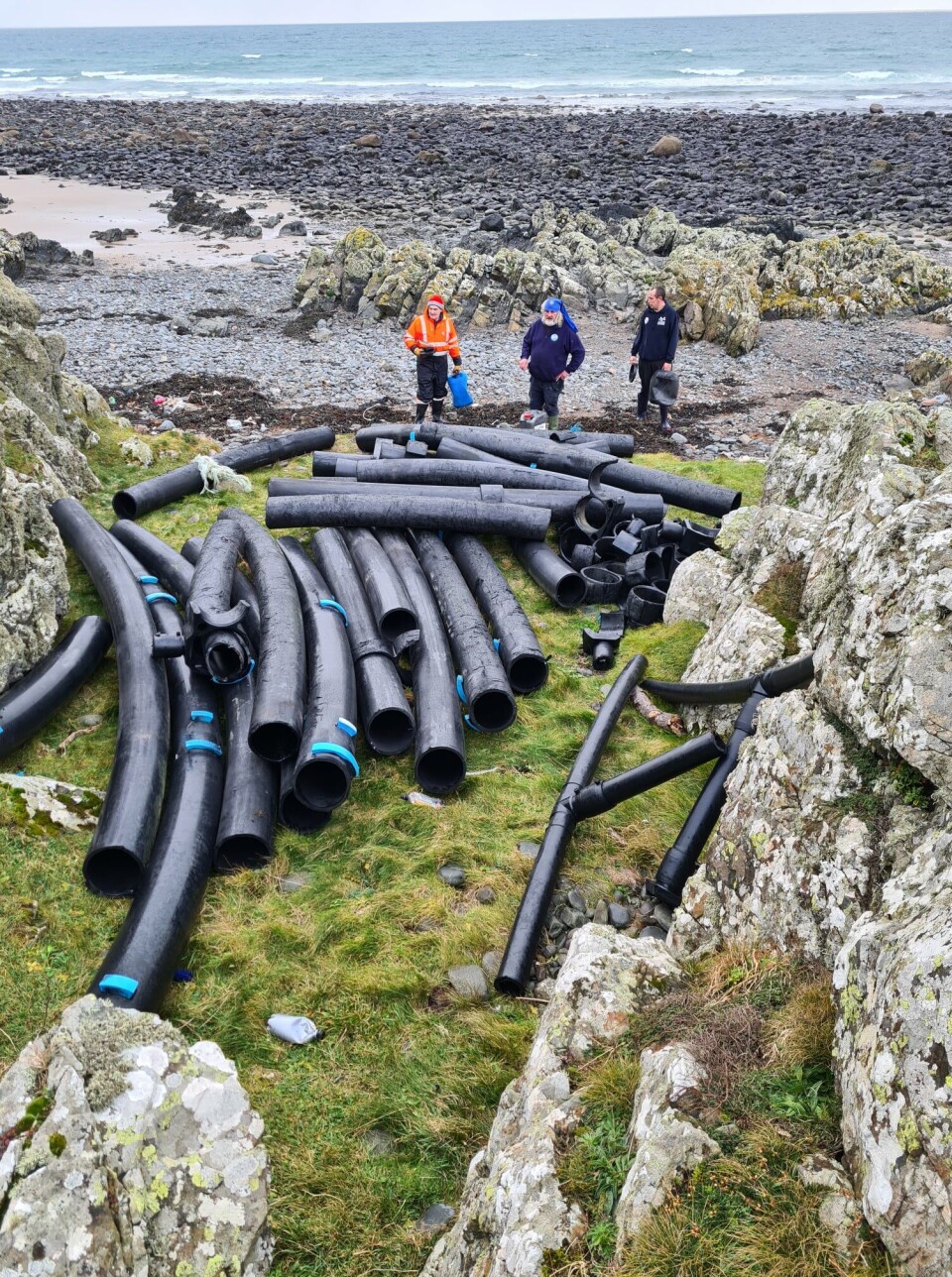
New farm role for washed up cage collar?
A fish farm cage collar washed up on a beach in south west Scotland may be used to make farm track culverts after been cut into pieces.
The collar was grounded in an inaccessible bay near Portpatrick, Dumfries and Galloway for around five years before being moved north on to Larbrax beach in recent storms. Volunteers from the local branch of beach cleaning charity Oceans Need Us (O N US) knew of its existence but only came across it for the first time on Sunday during a clean-up at Larbrax.
They returned the next day with chainsaws to cut up the collar so that it wouldn’t be washed back into the sea and cause a potential hazard to boats. The pipe lengths have been moved above the tide line.

Drainage pipes
Tommy Monteith, a former member of Portpatrick Coastguard and an active member of O N US, said a local farmer was due to look at the pipe lengths today to see if he could use them for drainage.
If not, O N US volunteers may have to carry them half a mile along the coast to a point accessible for a trailer. They might then be taken to a recycling centre.
“They’re about 12-foot lengths,” said Monteith, a former pipe welder. “We just cut them where we saw the joints.”
There were no labels on the collar to indicate who it belonged to or where it came from, said Monteith, who said he rarely came across fish farming debris during beach cleans.
Creels, nets and rope
“We get loads of creels, nets and rope, lots of things from fishing boats,” he added.
David Telford, chair of Portpatrick Community Development Trust and an O N US volunteer, said there were no signs that a net had been attached to the cage collar.
Larbrax beach is on the Rhins of Galloway, a hammerhead peninsula stretching 25 miles from north to south, and given its location the cage collar could have come from Scotland or Ireland.
“You have quite a narrow channel between Scotland and Ireland, so you get quite a lot of debris on both sides of the Rhins,” said Telford.























































